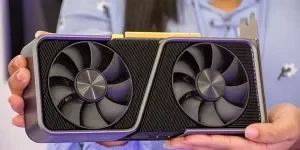Remember robotic vacuums? They’ve become mainstream products, with plenty of people using them to keep their floors sparkling. With that in mind, a device that tackles window-washing duties feels like a logical next step for those who hate streaks, heights, and clumsy ladder-balancing acts.
Window cleaning robots are smart enough to move smoothly across windows, using special sensors and technology to clean them quickly and accurately. This guide will explore how window-cleaning robots work, how to pick the right one for consumers’ needs, and it will share some useful tips to help retailers position them in their stores.
Table of Contents
Who is buying window-cleaning robots?
How do window-cleaning robots work?
Key features to consider when stocking window-cleaning robots
1. Suction power
2. Cleaning mechanism
3. Sensors and navigation
4. Battery life
5. Safety and backup mechanisms
6. Ease of use
Are window-cleaning robots effective?
Practical tips for positioning window-cleaning robots in stores
Final words
Who is buying window-cleaning robots?
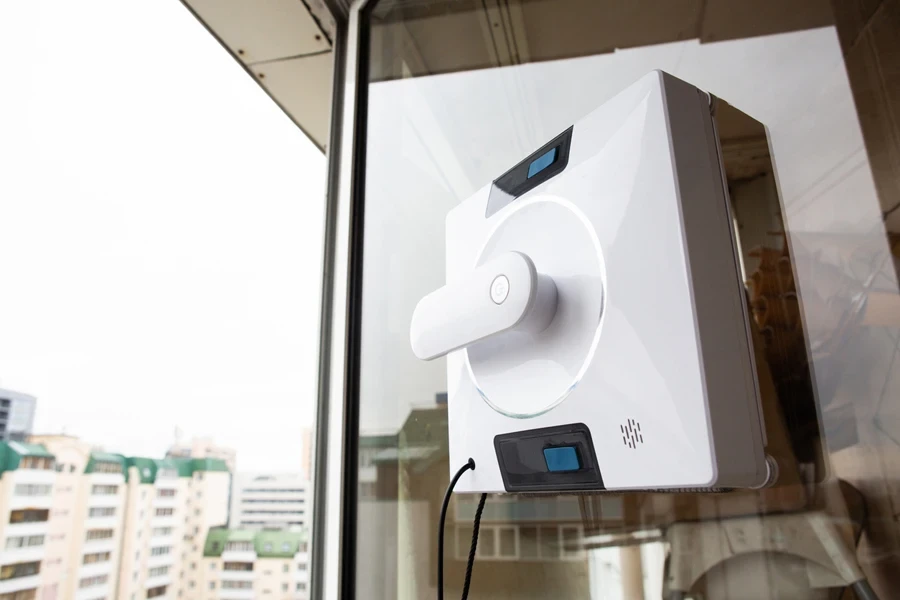
The first question retailers should always ask is, “Who’s the target audience?” In the case of window cleaning robots, they’re looking at a mix of homeowners with large or high-up windows, office managers who’d rather not hire frequent cleaning services, older adults who find climbing ladders dangerous, and busy professionals who just love the convenience of pressing a button to watch some gadget do the hard work.
These machines appeal to anyone who values an easier way to keep windows streak-free. Still, not everybody sees it as a must-have. If retailers get many customers who live in smaller apartments with only a couple of easy-to-reach windows, they might not want to spend the money.
How do window-cleaning robots work?
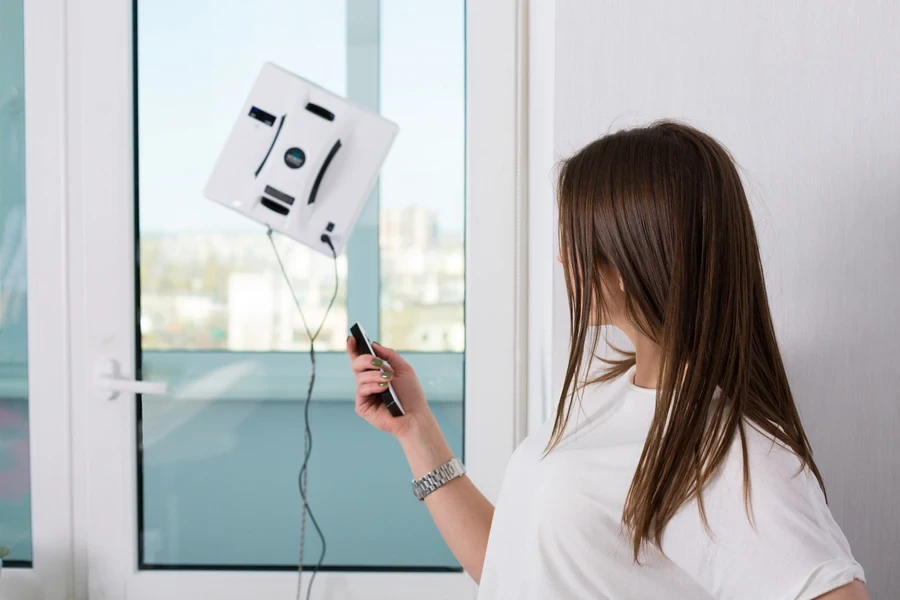
A robot window cleaner uses smart technology, sensors, and moving parts. Despite looking like a vacuum cleaner, these machines have strong motors that create suction, helping them to stick firmly to the glass. This suction keeps the robot steady while it moves around and cleans the window.
So, how does it clean? Window-cleaning robots use a mopping pad and tiny water sprays to loosen and wipe away dirt, smudges, and water spots. These machines can clean the entire window using rubber tracks or by spinning their cleaning pad for mobility. Plus, the sensors on this beauty give it superior navigation and obstacle detection/avoidance.
Key features to consider when stocking window-cleaning robots
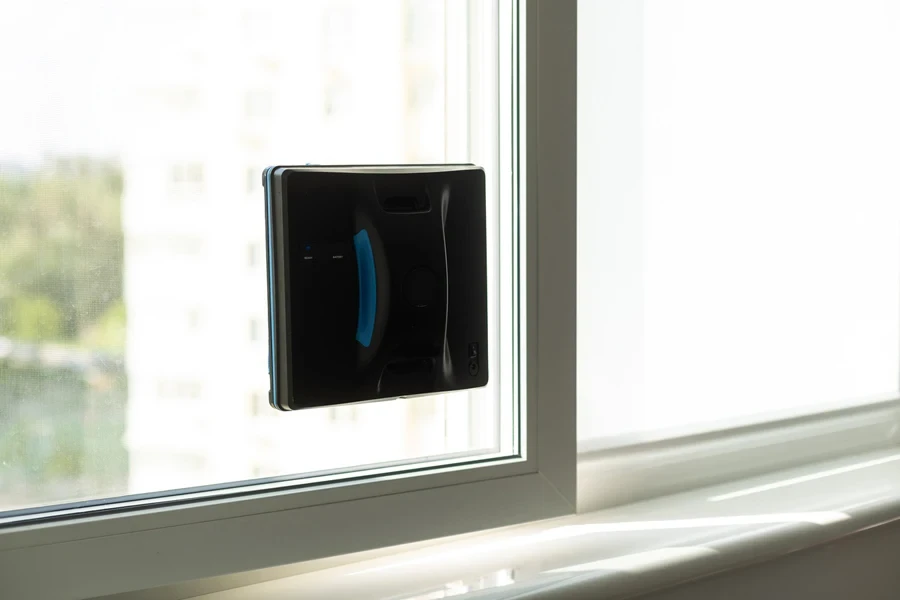
1. Suction power
As mentioned, window-cleaning robots stick to glass surfaces using powerful motors that create suction. If that suction isn’t strong enough, the device may slip mid-clean—or even take a tumble (the last thing customers want).
So, a good place to start is to verify how many “Pascals” of suction the robot can generate. Around 2,000 to 3,000 Pa is usually considered solid for standard home use. Anything significantly lower might be questionable for large or particularly dirty windows.
2. Cleaning mechanism
Different robots have different ways of wiping away grime. Retailers can stock models that rely on rotating pads or options that use a squeegee-like system—many also spray water or cleaning fluid as they go. But the question is, “Can the robot handle stubborn dirt?”
This is where retailers test the window-cleaning robots to see how well they can handle tough cleaning jobs. They should check if the robot has strong scrubbing power or special features specifically designed to tackle hard-to-remove dirt and stains.
3. Sensors and navigation
One great thing about window-cleaning robots is that consumers can use them manually or let them work automatically. If they prefer autonomy, it makes sense that the robot should know where to go and avoid toppling off an open edge. That’s where the suite of sensors (infrared, ultrasonic, or both) comes in.
They help models with advanced cleaning programs do their thing without requiring the user to step in. Remember to look for features like edge detection and smart navigation—they help the robot move around safely and clean the entire window from edge to edge.
4. Battery life
Regarding power, retailers have two choices: wired or wireless. Wired window-cleaning robots need an outlet to supply power through an extra-long cord (usually long enough to stop length from being an issue). However, if retailers are stocking wireless window cleaners, they must consider battery life since they’ll rely on them to move untethered.
Ask manufacturers how long the machine can run on a single charge (or check the product descriptions). While retailers can take their word for it, it won’t hurt to order a sample and see how long the battery lasts in person. It should last up to 1 hour and 50 minutes on a single charge—if not, then the battery life is not that great.
5. Safety and backup mechanisms
Another thing retailers should look for is window-cleaning robots with safety tethers. Users can attach them to the top of the window or frame in case the suction fails. Some models also have small emergency power systems that hold the robot in place for a few minutes if it loses power.
6. Ease of use
Even the coolest gadget fails if setting up is a pain. Consumers enjoy convenience, so a complicated interface or a million-step process to get the robot going is a major turn-off. Consider stocking robots with remote controls or options with companion smartphone apps. Regardless of what retailers choose, they should be easy enough for less tech-savvy users to set up and use in a breeze.
Are window-cleaning robots effective?
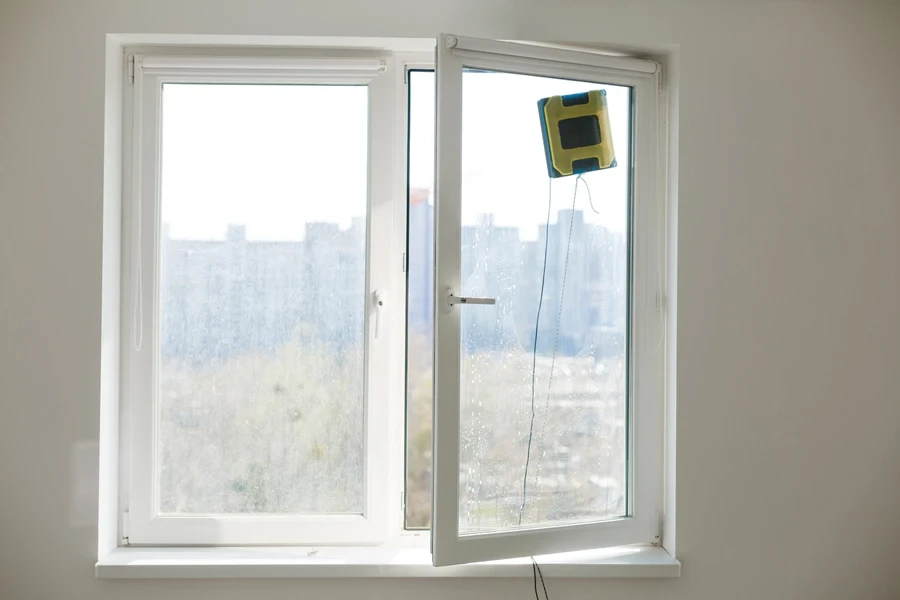
There’s a lingering concern among potential buyers: “Is this going to do as good a job as I would with a squeegee?” The honest answer is that window-cleaning robots are improving but are not infallible. Sometimes, they’ll miss a corner, or you might see faint streaks if the pads get too dirty.
Generally, though, they do a pretty solid job for a quick, everyday clean, especially on larger, smooth windows. If a user is extremely picky about a perfect shine, they might do a final touch-up by hand. But most owners find the convenience alone makes up for any minor imperfection.
So, it’s important for retailers not to overpromise. These machines often handle the bulk of the dirt fine but might not eliminate every streak if the window is in rough shape. Setting realistic expectations ensures consumers remain happy with their purchase, reducing returns or negative reviews aimed at your store.
Practical tips for positioning window-cleaning robots in stores
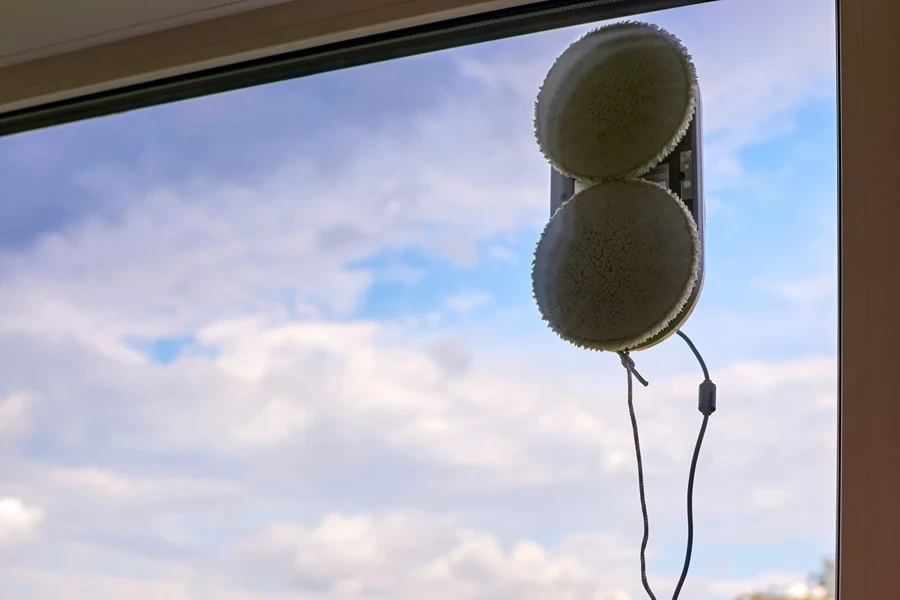
If retailers give these robots a shot, they should consider how to present them. Sticking them on a shelf next to regular mops and brooms might not do them justice because they’re more high-tech (and often pricier).
Since they pair well with other smart-home gadgets, they should put them near robot vacuums, smart pet feeders, or any automated item that says, “Look, you can outsource your household tasks to machines now.” This way, customers who trust robot vacuums may be intrigued by a window solution they didn’t even know existed.
It’s even better if retailers can set up a small demonstration. They can mount a piece of vertical glass (like a spare window panel) to let the robot show off its suction and cleaning pattern. Sometimes, seeing the device clinging to the glass is enough to grab a passerby’s curiosity, turning a short, rotating demo into a huge conversation starter.
Final words
Whether a window cleaning robot is right for your store depends on your market, your willingness to explore new technology, and the range of products you sell. If you have a hunch that customers would be thrilled at an automated squeegee (and you’ve seen how well other high-tech cleaning gadgets move), selling it might be worthwhile. However, remember to choose models with reliable suction, decent cleaning capabilities, and user-friendly controls because the novelty will wear off fast if the device doesn’t work consistently.

